Value-Based Selling: Definition, Examples & How To Do It Right
87% of successful companies prefer to focus on value-based selling to make sure they understand and address their customer’s needs.
In this article, we’ll focus on the primary concept of value selling and how it can drive better results (sales growth) for your business. We’ll explore practical strategies, best practices, and examples to show how to implement value-based selling and how brands do it right.
With this, you’ll discover engaging sales approaches that focus more on solving your customers’ problems and building trust.
What Is Value Selling?
Value selling is a sales strategy emphasizing the benefits of your services or products. Not just any benefits, you’ll only pick the ones that your prospective customers consider valuable to their needs, preferences, or pain points.
Here are the values most brands offer, including who they target to give you an idea:
- Ease of use: Busy individuals looking for products with minimal learning curve.
- Provide better results: Business owners and managers aiming to get higher success rates, ROI, and customer satisfaction.
- Improved product quality: Consumers who only invest in top-tier solutions because their lives (safety or health) depend on their quality.
- Time or cost savings: Decision-makers and budget-conscious consumers who prioritize operational cost reduction and efficiency.
- Customer satisfaction: Brands and businesses that focus on building strong, long-term relationships with their potential customers.
You can further improve your value-based selling strategies when you create a reliable value selling framework.
3 Key Aspects For Building A Strong Value Selling Framework
As you read these key aspects, highlight the practical points and think of how you can apply them to your business and meet your prospect’s specific needs and pain points.
1. Collect Data To Understand Your Prospects
Take time to learn about your prospects. What problems are they currently facing? And what services/products are they using to solve their problems?
To answer those, implement these data collection techniques and tools:
- Customer surveys
- Interviews and focus groups
- Web and social media analytics
- Social media listening (ex. Sprout Social and Brandwatch)
- Engage in conversations (social media DM, email, or chat)
Also, make sure you’re researching and actively listening to understand your target audience’s current situations, goals, needs, and preferences.
Best Practice: Perform Audience Segmentation
Segmentation is the process of grouping consumers who share similar needs or pain points. Let’s say you’re selling outdoor backyard shade structures. You can create group categories focusing on the customer needs, like a shade to:
- Cover deck or patio
- Enhance outdoor comfort
- Protect the prospect’s car or outdoor furniture
- Create private spaces over or around the hot tub or pool area
You can also take Pergola Kits USA’s value-selling approach—create categories for material types to suit their customers’ different preferences and budgets.

The brand specifically highlights each material’s advantages to help consumers make a final decision.
- Vinyl: Weather-resistant and maintenance-free; more budget-friendly
- Cedar: Creates a natural charm and warmer look; the cost depends on the wood’s grade and customization works
- Fiberglass: Highly resistant to corrosion, rot, and weather elements; relatively low-cost but still varies on the design complexity and added features
Segmentation is only recommended when the target audience is massive and customer behavior is consistent. If the customers’ behavior is unpredictable, use behavioral triggers instead. You can set specific actions or signals from customers that show their interests or intent.
The most common actions or signals are abandoned carts, recent purchases, and website interactions. After setting up your behavioral triggers, you can set up its automated response:
- Push notifications: Event reminders, account inactivity, or previously liked items are back in stock
- Product recommendations: Browsing history and past purchases
- Personalized email message or offer: Cart abandonment, wishlist additions, or product page visits
2. Assess Your Service Or Product & Define Your Value Proposition
Identify what value your service/product brings to the table. Review and discuss your service/product details with your sales team and concentrate on the aspects that solve your prospect’s pain points.
Vitamart sets an excellent example when communicating its products’ value proposition. We’ll focus on Vitamin D supplements just to give you a clear idea. The brand dissected every purpose of the product and chose to focus on Canadian consumers who experience prolonged winters.
With limited sun exposure, the human body (bones and immune system) can deteriorate over time. It can also change one’s mood and energy for the worse. So Vitamart clearly communicates their Vitamin D supplements’ purpose and benefits to make sure they can support their prospect’s health journey.
They provide advice on what type of Vitamin D supplement to consume:
- Vitamin D supplements: Help absorb and retain calcium and phosphorus, boost the immune system, and regulate mood fluctuations
- Vitamin D2 supplements: Help the body absorb calcium and phosphorus
- Vitamin D3 supplements: Maintain healthy bones, nerves, muscles, and overall support to the immune system
Value proposition should always answer the question, “Why should customers choose your service/product?” You can share it with a few of your customers or sales reps to test its effectiveness. Use their feedback to make necessary adjustments.
Best Practice: Highlight Your Service/Product’s USP
Value-based selling approach is also about what makes your service/product’s value better than your competitors. Consumers are always on the lookout for the latest offerings and compare each service/product’s features, pricing, and others. So, emphasize your service/product’s USP (unique selling proposition) to define your value proposition.
A good USP is clear, concise, and memorable. It typically covers any of these 4 categories:
Price - Walmart: Save Money. Live better.
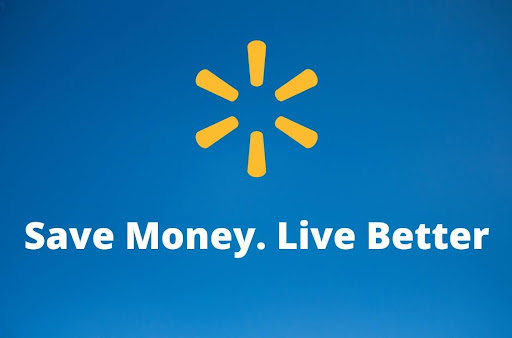
Quality - Bose: Better Sound Through Research
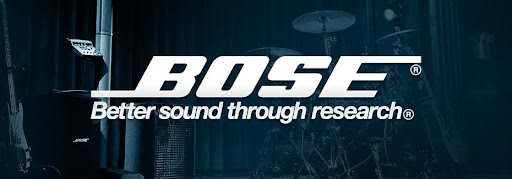
Service - Canva: Empowering the world to design

Combination (Quality & Price) - Vitamart: Quality You Trust. Prices You Love.
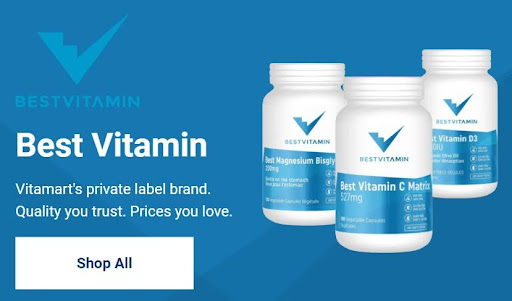
3. Share Case Studies To Build Credibility
After building a strong value proposition, your next move is to show how your solution can apply to different situations. Most brands use case studies to prove their solutions can solve real-world problems.
A case study is a comprehensive research and analysis of real-life scenarios where a service/product has been used to solve a problem. It initially describes what the challenge is about and illustrates the following:
- Solution: Explain why a specific solution is chosen and detail the steps taken to implement it
- Results: Showcase the positive outcome, which is often supported with supporting data and documents
- Conclusion: Recaps all the key information that contributes to the overall success and often ends with the customer’s testimonial
The testimonial is a key aspect of the case study because it adds credibility to your service/product’s value. They help other potential clients, who experience the same problem, to see how the solution can apply to their own.
CrankWheel’s case studies serve as an excellent inspiration. Instead of presenting facts, they create a compelling narrative to engage their prospects. It’s a simple way for their potential customers to understand the practical application of their screen-sharing solution.

Each case study features a specific client and often starts with a small company introduction and how they originally performed their sales process. Then, they introduce the conflict or problem.
As they establish the issue, they add the customer’s thoughts and experiences to make it more relatable. Here’s how they do it for the BeeDIGITAL case study.
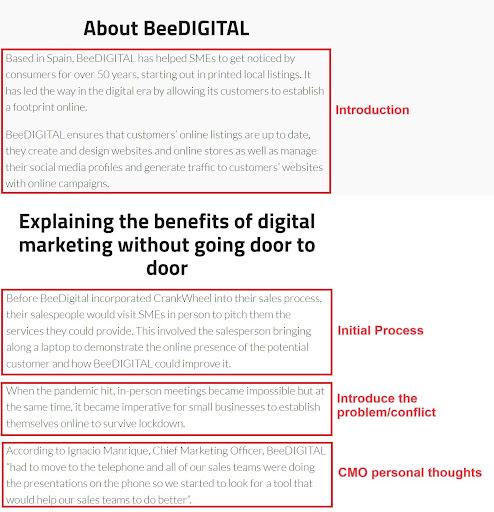
Best Practice: Repurpose Case Study Content
People have different ways to digest and engage with information. So, repurposing your case study content in multiple formats can reach wider audiences. Here are effective content formats you can use, including their benefits:
- Podcasts: Ideal for auditory learners.
- eBooks: Open lead generation opportunities.
- Infographics: Shareable and visually engaging.
- Blog posts: Excellent for driving organic traffic to your website.
- Videos: Increases prospects’ time spent on your website or social media channels.
4 Real-World Examples of Value-Based Selling
Struggling to get started? Look at these examples and best practices to get fresh ideas on how to apply them to your own brand.
I. Ease Of Use
When a customer buys a service or product, they want to use it immediately. So, it’s always recommended to make your service or product as easy and straightforward to use as possible. Sugar Me Smooth is one brand that is hyper-focused on this aspect.
How Sugar Me Smooth Does It
The brand delivers ease of use right off the sugar wax kit product page. They want their potential customers to know how quick and uncomplicated the process is before they purchase the product.
They provide learning materials to clearly explain how to use their product properly, including:
- Copy of the packaging label, which features the preparation steps.
- Step-by-step instructions on how to use the sugar wax kit (from the proper way to scoop the wax to remove it from the skin).
They also dedicate an entire page on their website for the how-to instructions. It includes both text and video tutorials so everyone can choose based on their learning style or preference.
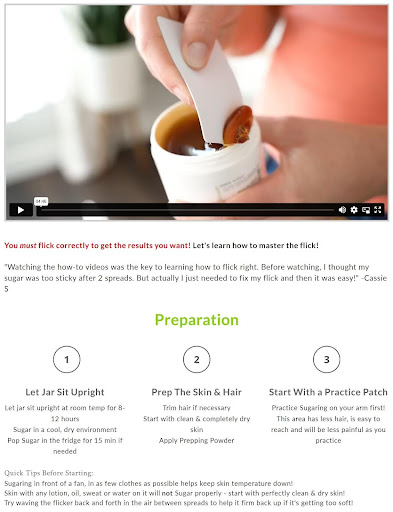
Key Takeaway
Use simple, everyday language when communicating ease of use. It makes it easier for everyone to understand the information in an instant. You should also be specific to set up your prospects’ expectations. For instance, write “apply in 4 easy steps” instead of “user-friendly”.
II. Quality & Durability
When a sales rep talks about quality on its sales pitch, what the consumer expects to hear is the answer to—how long it will last. They want to make sure that the product’s quality is worth every cent they’re investing into it.
Manufacturing companies often are the ones emphasizing quality and durability as their value proposition. Simply because their products have a significant impact on people’s safety and health.
The standard way to prove a product’s quality is by highlighting its expert craftsmanship. What are they made of? How do these materials affect their quality?
These are the 2 questions Moto Machines answers when describing its motorcycle models and accessories. Let’s take its Bonamici rearsets as an example.
The rearsets are made entirely of billet aluminum, which is known for withstanding higher levels of stress and strain. It’s completed with an anodized finish for added strength and resistance to corrosion. To prove its effectiveness, Moto Machines uses videos to feature reviews and demonstrations by a professional.
Bonamici Rearsets Review And Install On 2023 Aprilia RS660
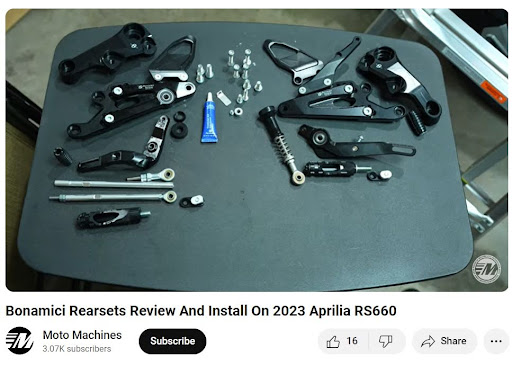
Sharing testing results is another excellent way to prove your product’s quality. This is a common practice in the medical device industry. Each device will undergo rigorous testing to guarantee its durability. If it passed a specific certification for quality, they make that information available too.
How To Share Testing Results
Create visual content. Videos are the obvious choice because it’s easy to understand and can keep the audience longer at your website or social media platforms.
But infographics are also an excellent choice to summarize the key test results. Here’s a simple infographic example explaining the hands-on testing process of a review site for a medical alert system.

After testing several medical alert models, they will start to group the results based on these criteria:
- Reputation
- Cost and value
- System Hardware
- Customer Service
- Battery life and reliability
Aside from visual content, you can mix it with detailed reports and customer testimonials to add more credibility. Then, integrate it into your marketing materials and communication to back up your claims.
Key Takeaway
Showcase your product’s quality and durability to give your customers peace of mind. Make them know that it will never fail them when they need it the most.
You can also give out warranties to make them feel safer. A warranty shows the confidence of a company that its product won’t fail that easily. But if it does, they will take care of the repair or replacement. It’s recommended to give longer warranties (3 to 10 years). The number of years will reflect how long the company expects the product to last without failing.
III. Sustainability
88% of customers are becoming more environmentally conscious. So, brands are focusing on adopting eco-friendly practices to connect with their customers.
Companies usually highlight sustainability in their mission story. They promise to meet higher environmental or ethical standards and take necessary steps to reduce their environmental impact.
How Google Does It
Google commits to run its data centers and offices using renewable energy. They set a goal to run a 24/7 carbon-free energy (CFE) by 2030. Every year they share reports to show their current sustainability strategy and summary of progress.

Many companies also prioritize sustainability by using eco-friendly materials, which is exactly what Shay & Blue delivers when creating their perfumes for women.
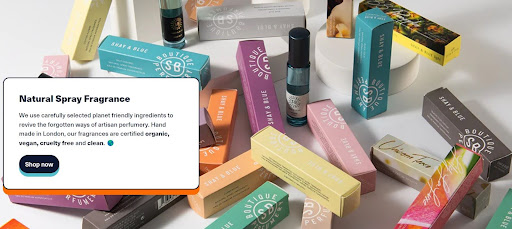
All their perfume ingredients and formulas are certified organic, vegan, and cruelty-free. Their packaging is also 99% plastic-free. Shay & Blue definitely can make you and the planet happy.
Key Takeaway
When highlighting sustainability, make sure to stay transparent and authentic. Let them know the reason why it matters to your company to become eco-friendly. It would also be helpful to acknowledge areas in your products that need improvement. Consumers appreciate honesty and would be more interested to know the steps you’ve taken to improve them.
IV. Cost Savings
A great deal makes consumers feel they are getting more value for their money. Even if they do not intend to shop, they will still do so when they see a sign like, “60% off all items”. This value-selling methodology taps the consumers’ deepest desire to maximize benefits while reducing costs.
How To Highlight Cost Savings
Offer volume discounts for bulk sales. Emphasize that the larger the quantities they buy, the lower the price they’ll get per item.
Costco is one of the big-box warehouses that offer generous bulk sale discounts. You’ll get more when you sign up to become a member, like an annual 2% Reward (up to $1,000) and a price adjustment.
The price adjustment is a request members can make when the prices on the website and warehouse are different. Costco can change it to whichever has the lowest price. Other excellent companies that showcase cost savings are:
a. Main Clinic Supply
Main Clinic Supply offers a low-price guarantee to help its customers find an affordable medical-grade portable oxygen concentrator filter. All of their sales professionals are certified technicians and oxygen specialists. So, consumers can ease their minds that they can help them find the exact oxygen concentrators suitable for their needs.

To further manage the cost, they also offer:
- Seasonal sale
- Financing options (PayPal Credit and CareCredit)
- Buyback program (sell your old portable oxygen concentrator)
The good news is that you can also use these cost-saving offers for selling high-demand products like smart home devices and tech gadgets. Since these products already have a high demand, whether you offer a discount or even a slightly reduced price, consumers will still be interested.
b. Genius
Hiring top talent upfront can save a lot of money for the company. This is where a headhunter agency’s expertise, like Genius, comes in handy. They have a wide network of qualified applicants and can match the right one with the right roles quickly. With their speed and efficiency, they can fill up the vacancy and reduce the potential of disrupting the entire operation.
Genius doesn’t have the hassle of upfront or monthly fees. They offer a one-time payment of 25% of your candidate’s first-year salary. If you don’t hire anyone, then you don’t have to pay for anything.
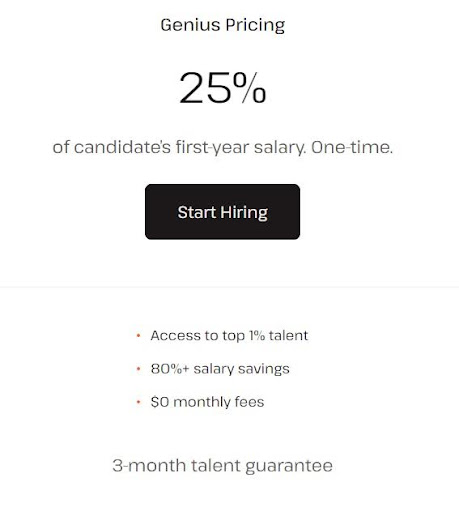
Every employer has their expectations. If the talent fails to meet them, Genius offers a 3-month talent guarantee. They will conduct a 2nd hiring at no added cost.
Key Takeaway
Always find the right balance between offering a good deal and making a profit. You can calculate your product’s total cost (production, labor, shipping, etc.) to help you set a price. Then, set an acceptable profit margin (minimum). As a rule of thumb, 10% is a healthy margin to set.
Conclusion
Value-based selling is simply putting your potential customer’s needs first. Understand your target audience so you can tailor your solution to address their needs and add more value to your business. Also, focus more on the buying process and not the selling process. Be genuinely helpful.
Make sure to bring your service/product’s value to every interaction. It will help strengthen your customer relationship and increase customer lifetime value (CLV).
Start planning your value-based selling strategies with your sales team using CrankWheel. With its interactive sessions, you can easily answer questions, address objections, and adjust your presentation. Get Started With CrankWheel today!
About the Author
Burkhard Berger is the founder of Novum™. He helps innovative B2B companies implement modern SEO strategies to scale their organic traffic to 1,000,000+ visitors per month. Curious about what your true traffic potential is?
